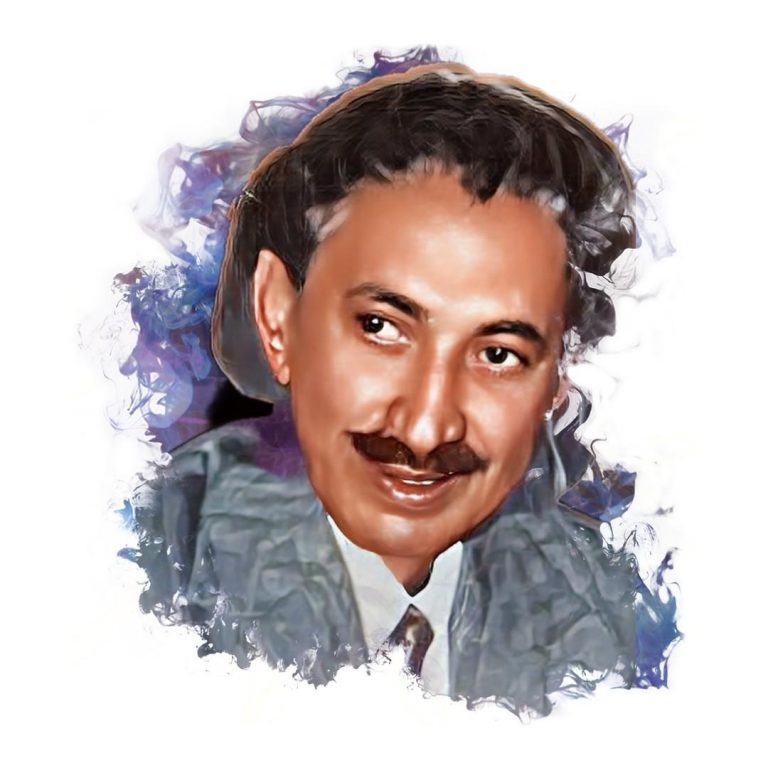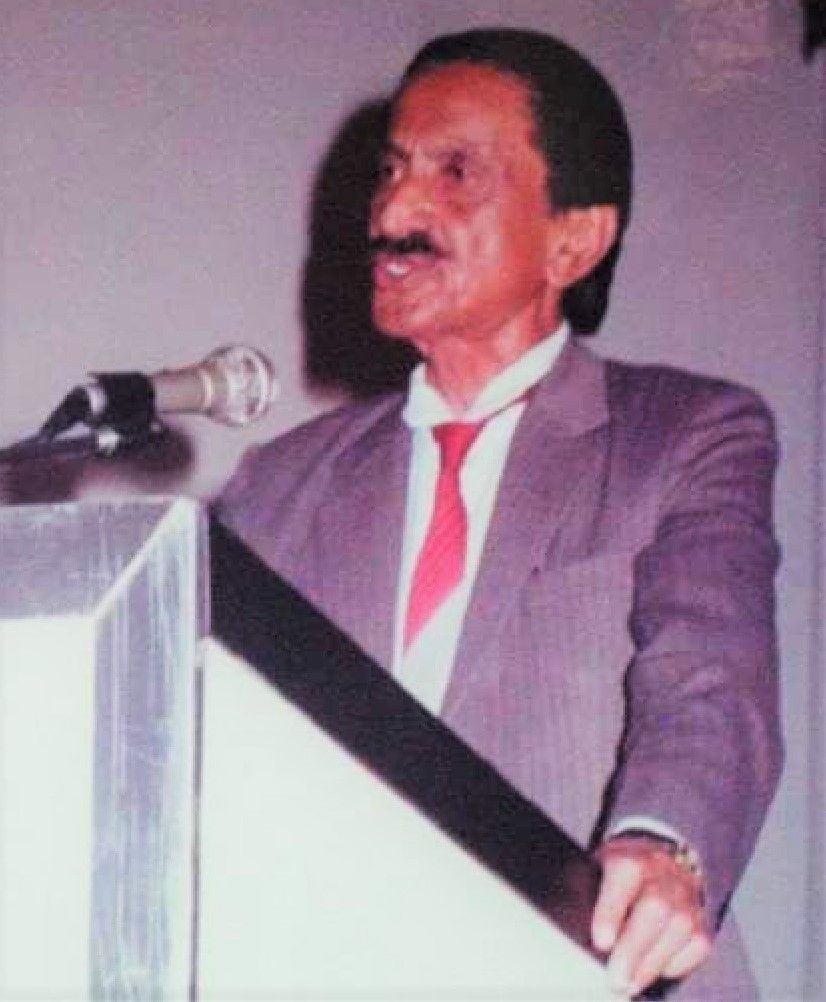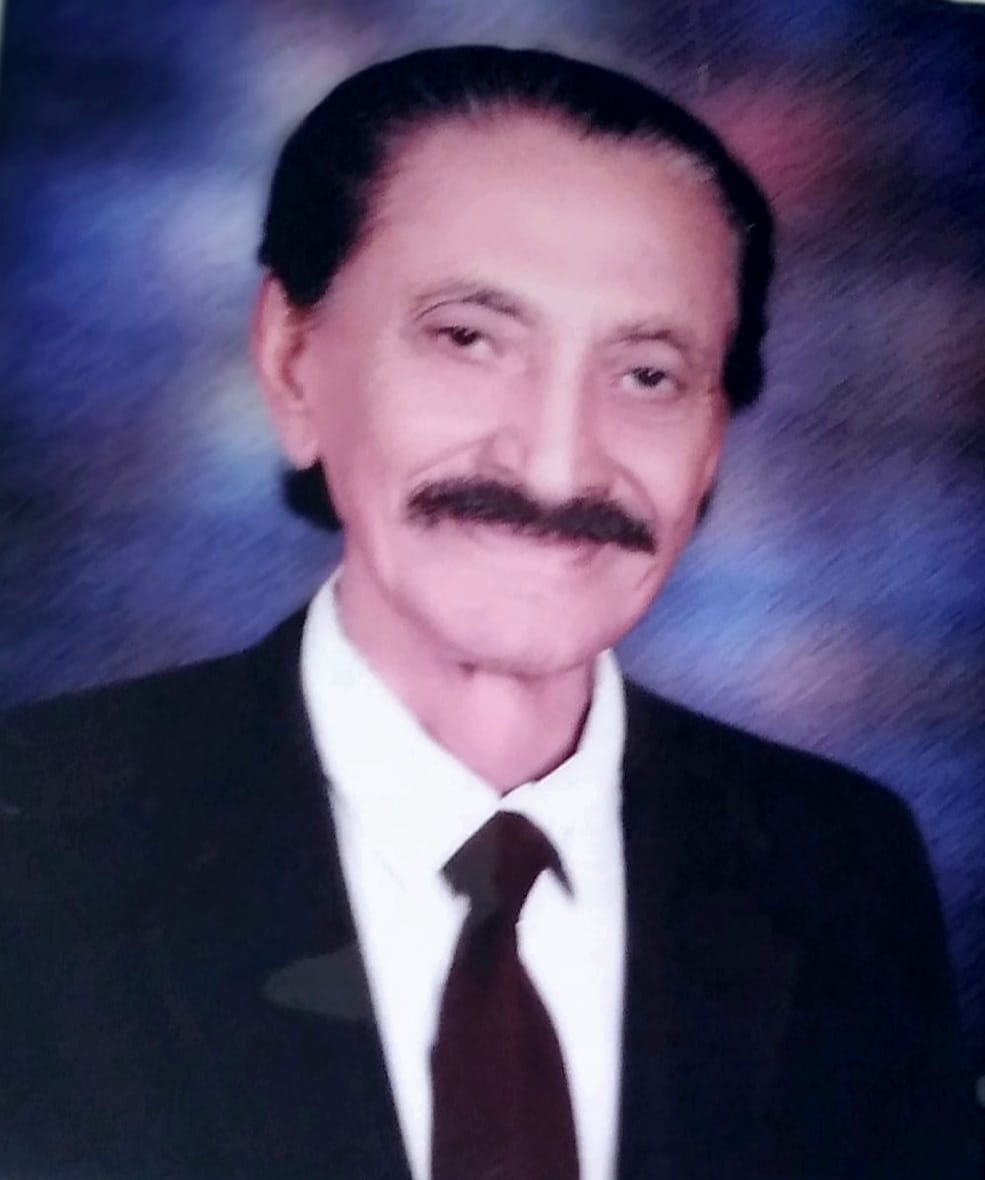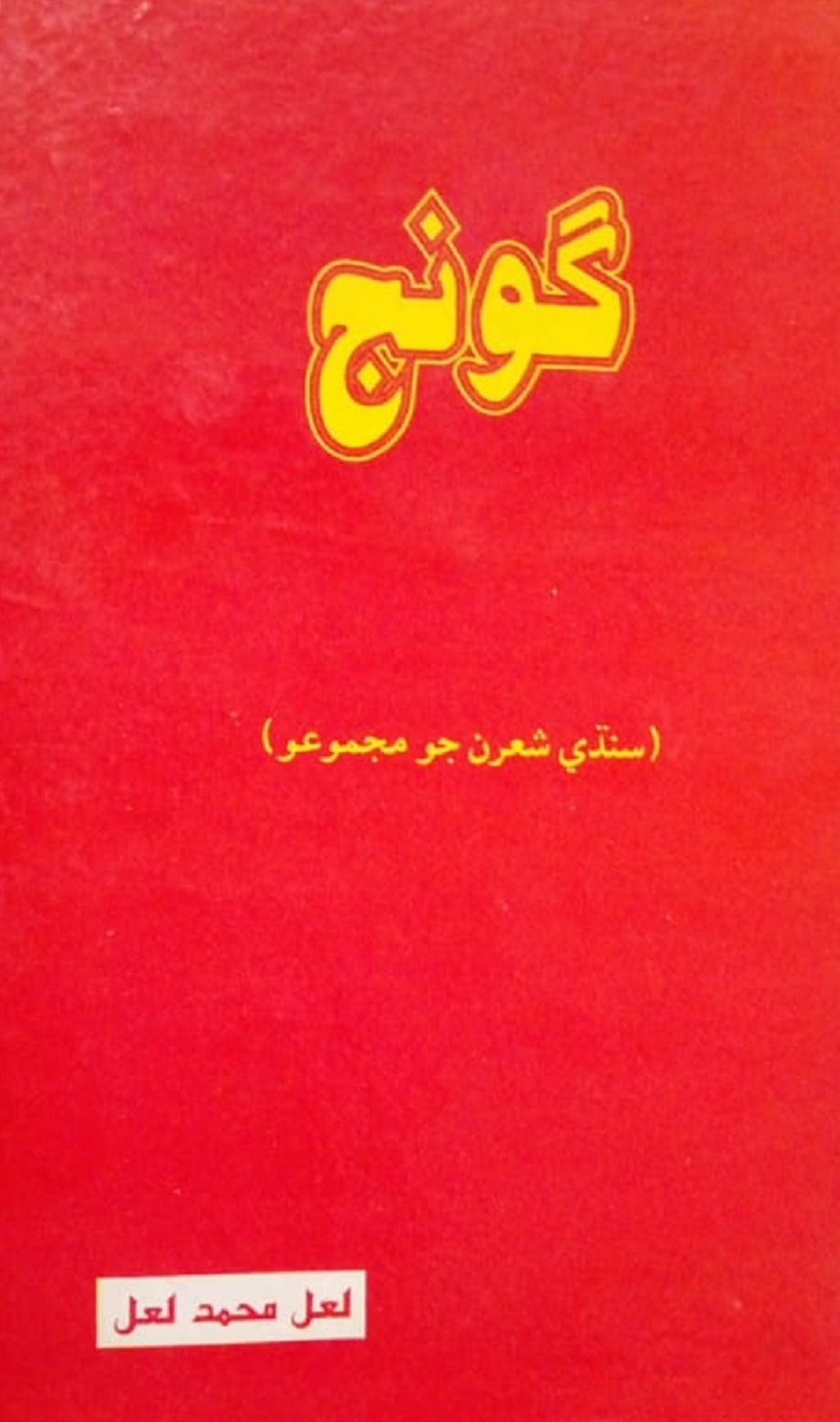
Shaikh Ayaz, the great poet of Sindh and his close friend also eulogized ‘Lal’ as ‘an expert in ghazal carving’, who used to write Ghazals in classical Urdu style’.
By Yasir Qazi
Lal Muhammad ‘Lal’ is one of the unique poets among the few noted rhymesters of the conventional era of Sindhi poetry, who carries an impeccable mien and a developed and pleasant poetic accent. His poetry is also long-lasting and deep in terms of its message. He started his literary services before partition and spread the aroma of his thoughts for more or less six decades.
Advocate Lal Muhammad ‘Lal’ was born on January 21, 1923, in the house of Dad Muhammad, in Shikarpur, a famous historical, cultural, academic and literary city of Sindh, also known as the “Paris of Sindh”, the same soil of Shikarpur, where 180 years earlier, the well-known Vedantic Sindhi poet ‘Saami’ (Bhai Chen Rai Bachu Mal Lund), was born. Lal was only one month older than his literary friend and contemporary Sindhi poet Shaikh Ayaz.
Lal Muhammad was born when Abdul Karim “Gadaa’i”, Comrade Hyder Bakhsh Jatoi and Usman Ali Ansari were of young of age 21 at that time, Kheeyal Das “Faani” was 9 years old, Qazi Abdul Hayee “Qaa’il” was 6, Gobind Punjabi 5, Makhdoom Talib-ul-Maula, Prof Dr. Atta Muhammad “Hami” and Shaikh Abdul Razzaq “Raz” were 4, while Taj Sahrai was only 2 years old, while Nisar Bazmi was born one year after Lal Muhammad “Lal”, Nooruddin Sarki was 4 years, Niaz Humayuni 7 years and Agha Saleem opened eyes 12 years later.
 After receiving his primary education in Shikarpur, Lal Muhammad “Lal” passed his matriculation examination from Government High School Shikarpur, while he did intermediate from C & S College (Seth Chela Singh, Seetal Das College) Shikarpur, which was one of the only three intermediate colleges in Sindh until the partition of India. The rest of the two colleges were D. J. Sindh College Karachi and Government College Hyderabad (more popularly known as ‘Kaari Mori College’, which has now been upgraded as a university). After passing the intermediate examination, Lal Muhammad was posted as a clerk in the Barrage Department of the government of Sindh. After working in this position for some time in Shikarpur and its suburbs, he was transferred to Karachi. In 1948, he passed B.A. (Hons) examination and then received education in law in 1952 from S. M. Law College Karachi. After completing his LLB, he resigned from the government service and started practicing law in Karachi. He joined a law firm called ‘G.M. Shah & Company’ as a junior lawyer. But it did not take long for him to make a name for himself in the circles of expert lawyers of Karachi due to his outstanding skills.
After receiving his primary education in Shikarpur, Lal Muhammad “Lal” passed his matriculation examination from Government High School Shikarpur, while he did intermediate from C & S College (Seth Chela Singh, Seetal Das College) Shikarpur, which was one of the only three intermediate colleges in Sindh until the partition of India. The rest of the two colleges were D. J. Sindh College Karachi and Government College Hyderabad (more popularly known as ‘Kaari Mori College’, which has now been upgraded as a university). After passing the intermediate examination, Lal Muhammad was posted as a clerk in the Barrage Department of the government of Sindh. After working in this position for some time in Shikarpur and its suburbs, he was transferred to Karachi. In 1948, he passed B.A. (Hons) examination and then received education in law in 1952 from S. M. Law College Karachi. After completing his LLB, he resigned from the government service and started practicing law in Karachi. He joined a law firm called ‘G.M. Shah & Company’ as a junior lawyer. But it did not take long for him to make a name for himself in the circles of expert lawyers of Karachi due to his outstanding skills.
After some time, he temporarily said goodbye to the field of law, and in 1954, due to his academic excellence and teaching proficiency, he started teaching at the alma mater of Quaid-e-Azam, Sindh Madrasat-ul-Islam Karachi and proved himself an exemplary educationist. Along with teaching, he also served as the chief editor of school magazine named “Sindh Madrasah Chronicle”. Besides editing its English and Sindhi sections, he also worked on decorating the exceptional layout of the magazine. By the end of the first year of his employment in Sindh Madrasa, he also passed the ‘B.T’ exam as a position holder with outstanding marks, in 1955.
Lal probably had a passion for poetry by birth. He learnt the basic principles of poetry, including the knowledge of meter, from the well-known Sufi poet Faqir Ghulam Ali “Masroor” of his city, and his writings started being published in the well-known Sindhi magazines and journals of that time, including “Sindhoo” and “Adeeb Sindhi” from the young age. Shaikh Ayaz, Lal’s friend, companion and accomplished poet of the Sindhi language, quotes Lal Muhammad as “Lal” in his autobiography, Volume II:
“In those early days, Lal Muhammad ‘Lal’ and Naeem Siddiqui were my best friends. Lal Muhammad ‘Lal’ was an expert in ghazal carving. Nature-wise, he was a simple and honest person. The literary activism of Lal Muhammad ‘Lal’ in Shikarpur in 1941 gave a clear rise to Sindhi literature and with his efforts, the Muslim Sindhi Literary Society was established, of which he himself was elected as the Secretary-General, whose popular mushairas used to be held in ‘Jumanni Hall’ (Present Municipal Office). The literary consciousness started to grow in Shikarpur through these poetic congregations (Mushaai’raas). On the one hand, senior poets such as Lutfullah Badawi, Faqeer Ghulam Ali Masroor and Faqeer Abdul Wahab “Nazim” were given the opportunity to convey their poetic message to the public, and on the other hand, the youth also developed a passion for reciting poetry. Among them were Shaikh Ayaz, Ehsan Ahmed Badavi, Naeem Siddiqui and Rasheed Ahmed Lashari. At that time, Rasheed Ahmad Lashari used to live in Shikarpur and his friendship with ‘Lal’ was very deep. In fact, Lal Muhammad had a big contribution in making Rasheed Ahmad Lashari active in the field of literature.”
Shaikh Ayaz mentions ‘Lal’ at some other place, as:
“Lal Muhammad ‘Lal’ used to write Ghazals in classical Urdu style. The old senior poets of Urdu, including Insha, Momin, Naasikh etc. used to be his favorite poets. He used to write very mature poetry and he gave core importance to closure in poetry. We could also see the closure in his name ‘Lal’ and his poetic name: ‘Ahmar’. In fact, Lal Muhammad was a great teacher of classical case studies in the ‘Ghazal Technique’. Even the poetry of Ghazal poets of Larkana (at that time) sounded ‘formulated’ and artificial, compared to Lal’s poetry.”
During his early residence in Karachi and his teaching days in the Sindh Madrasah, Lal Muhammad’s literary closeness included Shaikh Abdul Haleem “Josh”, Sarshaar Uqaili, Niyaz Humayuni, Dr. Ayaz Hussain Qadri, Shaikh Abdullah “Abd”, Shaikh Murad Ali ‘Kazim’. The company of these, as well as other established poets of that period, increased the literary dynamism already dwelling in Lal’s nature. It was his more good fortune that along with other literary fellows he had the privilege of being in the closeness and companionship of two great literary scholars of Sindh, i.e. Allama I.I. Kazi and Shams-ul-ulama Allama Umar Bin Muhammad Daudpota. Both of them were outstanding admirers of his poetry and intellect as well as for being active in literature. In view of this love of words and level of courage, in 1951, Lal Muhammad launched a monthly literary magazine, titled “Aftab” on the advice of Allama Daudputa and Shaikh Abdul Haleem “Josh”, which published the finest scholarly content. Within a short time, this magazine was warmly received in the literary circles of Sindh but since “Aftab” was a periodical published purely for the Sindhi literature on a non-commercial basis, it couldn’t continue longer due to financial constraints.
 During his initial stay in Karachi, Lal Muhammad Lal was seen as a dynamic and active participant in almost all the academic and literary activities, including Mushairas held in the City.
During his initial stay in Karachi, Lal Muhammad Lal was seen as a dynamic and active participant in almost all the academic and literary activities, including Mushairas held in the City.
In 1960, Lal Muhammad Lal returned to Shikarpur due to his father’s ill health and continued his livelihood as local ‘Oath Commissioner’ for some time. After which he formally started practicing law here and within a squat spell of time emerged as an adept lawyer of civil and constitutional matters. Soon he became one of the most talented legal experts. Soon after, he joined the local bar in 1969 and was a frequent participant in the activities of the bar, for a long time thereafter. He was also elected as the President of the District Bar Association Shikarpur twice and spent successful phases in this position, leading the bar enthusiastically. He continued to practice as well as teaching law and in 1990 was appointed as the first principal of the newly established “Haji Maula Bakhsh Soomro Law College” at Shikarpur. His own intense efforts made the foundation of this Law College possible because the establishment of a law college in Shikarpur was a long-awaited dream of Lal, which was fulfilled in 1990 when he headed as its first caretaker, from where he retired in 1994.
During his career as a lawyer, Lal Muhammad launched his own publishing house under the name of “Aijaz Publication” in the name of his eldest son. Under this, the series of publications of assorted books started. The first publication was “Daur-e Saghar”, the poetry collection by Maula Bakhsh Sangi in Sindhi. In 1993, he published his debut and only poetry collection, titled “GOONJ”, which includes ‘Ghazals’, ‘Nazms’ and a few ‘Qitas’. Lal Muhammad ‘Lal’ also served as the lifelong president of the Shikarpur District Historical Society. On behalf of this, he also organized several seminars regarding the history of Shikarpur. He has also written various articles on the history of Shikarpur in English. Along with this, he also sent plans and suggestions to the various heads of state multiple times, regarding the welfare and development of Shikarpur city, including a detailed English text, titled “Some Suggestions for Shikarpur”, which was published by him, in which, along with the external beautification of the town, a comprehensive plan regarding the drainage of Shikarpur (especially rainwater), the renovation of the Shahi Bagh, the construction of paved roads around the city, the creation and edification of Shikarpur Public Stadium and many other vital proposals were included, some of which were implemented, which transformed the ambience of the city, and if all these proposals were put into practice, Shikarpur today would truly have been a model town of the country. The concern for the progress and development of his city to this level proves Lal Muhammad’s regard towards his native land.
Lal Muhammad ‘Lal’ was fluent in Sindhi as well as Urdu, English, Arabic and Persian. In terms of poetry, he is considered among the most significant poets of the traditional epoch of Sindhi poetry. His verses are representatives of the Sindhi ghazal tradition of his phase, decorated with Persian color. Though despite his closeness to Sheikh Ayaz, his expression could not lead the path of modern Sindhi literature, in his manifestation, Lal Muhammad “Lal” showcases the extraordinary qualities of language and the beauty of eloquence, extensively.

Lal Muhammad was blessed with two sons and four daughters. His eldest son Aijaz Ahmed remained a civil servant, while his second son, Ayaz Ahmed, is associated with the same fraternity of law, as his father did; but there is no one in his family who may directly carry forward his literary heritage as a fulltime writer or poet. However, his entire family values his literary achievements and tries its best to disseminate them to the maximum number of readers and lovers of the letters. The testimony of which is “GOONJ” the only book by Lal Muhammad “Lal” (published till date), which was compiled by the author himself, but his eldest son Aijaz Ahmed played an active role in determining the other most imperative stages of its publication and by publishing this book in 1993, being his father’s right hand and he did his best to bring it to the circles of Sindhi readers around the world.
In 1997, Lal Muhammad Lal’s health suffered due to a malfunction in his large glands. Due to this, he had to stay under treatment at Liaquat National Hospital Karachi and also had to go through surgery. After some time, the problem did not seem to improve, and he had to be admitted to the Aga Khan University Hospital, for further treatment, where he had to undergo another prostate operation, but he could not recover even after several days of this second operation and passed away on May 5, 1997, at the age of 74 years, 3 months and 2 weeks. He was laid to rest by the side of his life partner in Gulshan-e-Iqbal Block 3 cemetery in Karachi.
The literary heritage left by this ‘Lal’ (the jewel) of the literature, his style of expression, the unique flavor of his speech and his literary and journalistic dynamism, will keep him alive in the scholarly circles of Sindh for an elongated time.
_________________
 The author is a freelance radio and TV broadcast and print journalist, poet, prose-writer, researcher, columnist, blogger, translator, media Expert, and author of 12 books in Sindhi, associated with radio since 1995 and television since 2002. He writes regularly for esteemed English, Urdu and Sindhi papers and websites. He can be reached at djyasirqazi@yahoo.com
The author is a freelance radio and TV broadcast and print journalist, poet, prose-writer, researcher, columnist, blogger, translator, media Expert, and author of 12 books in Sindhi, associated with radio since 1995 and television since 2002. He writes regularly for esteemed English, Urdu and Sindhi papers and websites. He can be reached at djyasirqazi@yahoo.com